4 cosmic phenomena have the speed of traveling through the speed of light
The speed of light in a vacuum is equal to 299,792.458m / s. Physicists have found four cosmic phenomena that can reach a state faster than light but still follow the laws of the universe that are Cherenkov radiation, the inflation of the universe immediately after the Big Bang. , entangled quantum and deep hole.
- The strange energy beam moves faster than the speed of light, moving in a spiral form
- Learn about black holes, white holes and deep holes
The laws of the universe posed by special relativity give us a better insight into the strange behavior of light in the field of quantum and do not reject Einstein's theory.
In 1905, Einstein introduced the famous equation E = mc2 , indicating the relationship between energy and mass. According to this equation, no object with mass can move faster than light.
Although using the LHC particle accelerator to accelerate subatomic particles like electrons, protons, neutrons . but they can only travel at a rate of 99% of the speed of light only. The only particle moving at the speed of light is the photon but it has no mass.
However, physicists have found phenomena that can reach a state faster than light without going against the laws of the universe.
Cherenkov radiation
An object moving faster than sound will produce ultrasonic explosions. According to that theory, if something moves faster than light, a "light bomb" will be created.
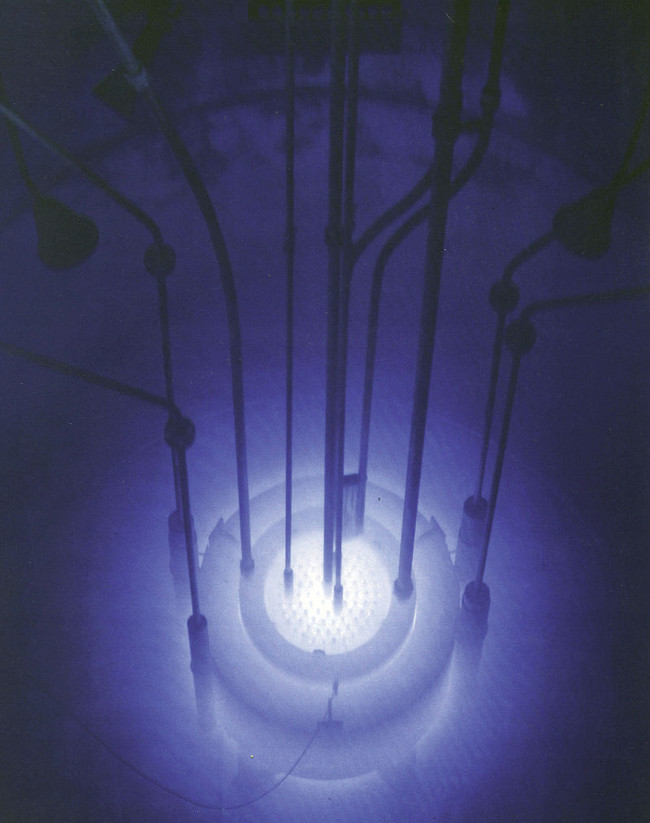
Cherenkov radiation in the Reed reactor.
These light bombs, called Cherenkov radiation, are blue light in nuclear reactors that still occur daily and can be observed with the naked eye. This radiation was named after Soviet scientist Pavel Alekseyevich Cherenkov, who first measured it in 1934. In 1958, he won the Nobel Prize in physics with this discovery.
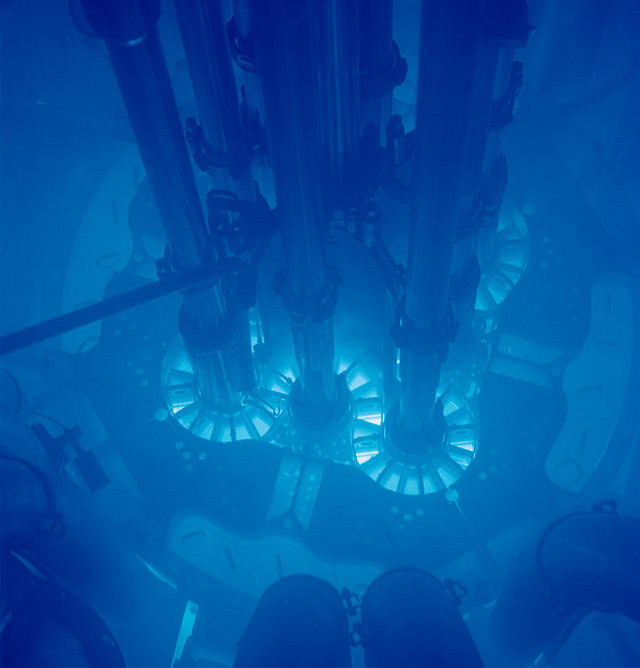
Cherenkov radiation in a nuclear reactor.(Photo: Argonne National Laboratory).
When the core of the reactor is submerged in water for cooling, Cherenkov radiates. The speed of light in water is only 75% of the speed of outside vacuum. Therefore, in water environments the electrons generated from the reaction in the furnace will move faster than light. This process generates shock waves of blue light, or sometimes ultraviolet rays that the naked eye cannot see, like an ultrasound plane.
But in this case, the speed of electrons is only faster than the speed of light in the water, not really reaching the speed of 299,792,458 m / s.
Inflation after the Big Bang
According to physicists, the vacuum absolutely does not contain matter, so it can also be considered a "mass" object.
Michio Kaku, an astrophysicist, said, "Because there is no material inside, the vacuum can expand faster than the speed of light."
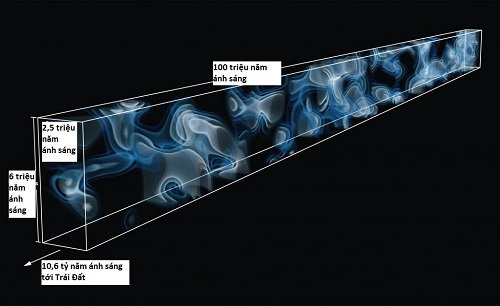
3D images of the universe at a distance of 10.8 billion light-years from Earth.(Photo: Casey Stark (UC Berkeley) / Khee-Gan Lee (MPIA)).
In 1980, physicists Alan Guth and Andrei Linde hypothesized that this phenomenon occurred shortly after the Big Bang, in the process called inflation. In one billionth of a first second, the universe doubled in size, causing the outer boundary to expand extremely fast, even surpassing the speed of light.
Quantum entanglement phenomenon
At the original level, this phenomenon is how subatomic particles interact with each other.
According to physicist Kaku, " According to quantum theory, if there are two electrons placed close to each other, they can vibrate in the same state. If separated from each other, hundreds or even thousands of light years, they still If an electron oscillates then the remaining electron will "touch" this oscillation immediately, faster than the speed of light. Einstein himself is difficult to accept because of his speed. light level must be the largest ".
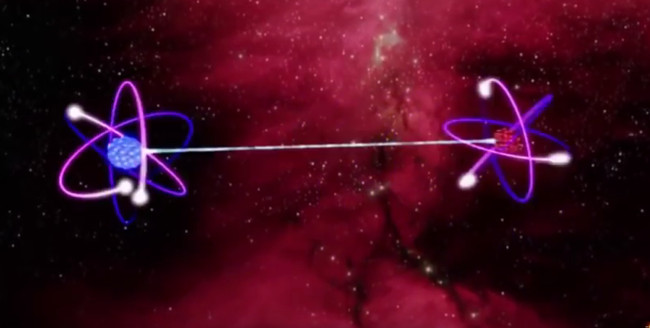
Artwork of quantum entanglement phenomenon.(Photo: YouTube / Stargazer).
In 1935, Einstein and his two colleagues, Boris Podolsky and Nathan Rosen, tried to reject quantum theory. They co-wrote a famous report entitled "description of quantum mechanics into the physical realm is incomplete", giving arguments that point to quantum entanglement as a paradox (today is called EPR paradox, according to three people name) and cannot happen.
Today, quantum entanglement is an effect applied in some of the world's most advanced technologies such as quantum cryptography, quantum teleportation, and quantum computing.
Deep hole
The theory of relativity is bound to bind energy to mass, but Einstein offers a general theory of relativity that shows that space and time can be "close" to each other, leading to hope for interstellar travel.
According to Kaku, spacetime bending is the only feasible way to break the light barrier. That bend is "deep hole". According to the deep hole theory will allow something to cross a huge distance immediately, this means that the speed limit of the universe will be broken.
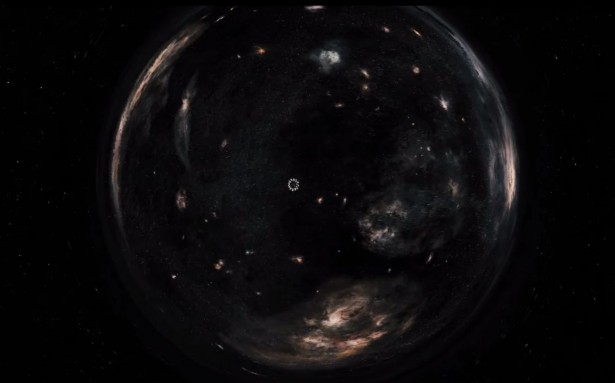
Illustrative images of deep holes.(Photo: Warner Bros).
In 1988, Kip Thorne, theoretical physicist, used the equations of Einstein's theory of relativity to predict the probability that deep holes could be permanently opened for astronautics. But these deep holes need a strange kind of material, which will not be sucked in as ordinary matter but pushed by gravity, to keep them from being closed.
According to Thorne, thanks to the bizarre nature of this quantum physics, this kind of strange matter really exists.
There have been many studies by physicists to determine if there is enough material in the universe for deep holes but no answers yet.
You should read it
- What is the light year?
- The first 'wandering black hole' was discovered, 7 times as massive as the sun, and it took scientists 6 years to observe it
- Insert the photon into the empty space inside the diamond
- Amazingly see the light move at a rate of 10,000,000,000 frames per second
- Is the speed of light slower than assumed in Einstein's theory of relativity?
- How fast can a rocket fly to win gravity and escape the Earth?
- 10 interesting facts about black holes in the universe (Part 1)
- Discover the most bizarre black holes in the mysterious space universe
May be interested
- Traveling with Kids: How to Make Your Trip Fun and Stress-Free
 traveling with children is an opportunity for the whole family to enjoy fun activities together. you can help your children enjoy the most enjoyable and comfortable trip possible by applying the following tips.
traveling with children is an opportunity for the whole family to enjoy fun activities together. you can help your children enjoy the most enjoyable and comfortable trip possible by applying the following tips. - 8 mysterious natural phenomena cannot be explained by science
 let's tipsmake.com discover 8 mysterious natural phenomena that cannot be explained by science below!
let's tipsmake.com discover 8 mysterious natural phenomena that cannot be explained by science below! - What is the light year?
 the unit of light years is often used when referring to the distance in the universe as the distance from the earth to the sun, moon, mars or the distance between planets ... so, the light year is what? how many kilometers is a light year?
the unit of light years is often used when referring to the distance in the universe as the distance from the earth to the sun, moon, mars or the distance between planets ... so, the light year is what? how many kilometers is a light year? - Detected the largest cosmic explosion in history, creating a light source 2 trillion times that of the Sun
 the explosion may have originated from the rare event where a giant gas cloud was swallowed up by a supermassive black hole.
the explosion may have originated from the rare event where a giant gas cloud was swallowed up by a supermassive black hole. - Computer connection: Light Peak optical cable
 light peak is a high-speed fiber optic technology, designed and designed by intel to connect electronic devices. currently, light peak bandwidth reaches 10gb / s but may reach 100gb / s in the future. at the current 10gb / s speed, in theory a blu-ray movie can be transmitted in less than 30 seconds, 64gb of mp3 in 1 minute.
light peak is a high-speed fiber optic technology, designed and designed by intel to connect electronic devices. currently, light peak bandwidth reaches 10gb / s but may reach 100gb / s in the future. at the current 10gb / s speed, in theory a blu-ray movie can be transmitted in less than 30 seconds, 64gb of mp3 in 1 minute. - A series of amazing natural phenomena that you cannot see every day, or never in your life
 cloud holes, lava on the beach, rainbow waterfalls or flower desert ... are unique natural phenomena that appear dozens or even hundreds of years to appear once.
cloud holes, lava on the beach, rainbow waterfalls or flower desert ... are unique natural phenomena that appear dozens or even hundreds of years to appear once. - Beautiful Cosmic Background, download Beautiful Cosmic Background here
 the universe is vast with many beautiful and attractive colors. if you are a space lover and are looking for cosmic background patterns, then follow this article.
the universe is vast with many beautiful and attractive colors. if you are a space lover and are looking for cosmic background patterns, then follow this article. - Things you should not bring when traveling for a long time
 luggage is an important item when traveling far away. below are some items you should not bring when traveling or going away for a long time.
luggage is an important item when traveling far away. below are some items you should not bring when traveling or going away for a long time. - The most impressive cosmic images 2019
 in 2019, scientists recorded many impressive moments of the universe.
in 2019, scientists recorded many impressive moments of the universe. - The largest-ever explosion in the universe created a giant hot-air sphere that could hold 15 Milky Way galaxies
 on february 27, 2020, astronomers at the center released the announcement of the most powerful explosion recorded in the history of the universe since the big bang. the explosion comes from a supermassive black hole at the center of a galaxy in the ophiuchus cluster, 390 million light-years from earth.
on february 27, 2020, astronomers at the center released the announcement of the most powerful explosion recorded in the history of the universe since the big bang. the explosion comes from a supermassive black hole at the center of a galaxy in the ophiuchus cluster, 390 million light-years from earth.










 Three potential landing locations are listed in the Martian Mission in 2020
Three potential landing locations are listed in the Martian Mission in 2020 The 9 biggest mysteries of modern physics make scientists headaches (Part 1)
The 9 biggest mysteries of modern physics make scientists headaches (Part 1) The 9 biggest mysteries of modern physics make scientists headaches (Part 2)
The 9 biggest mysteries of modern physics make scientists headaches (Part 2) Crazy idea: Create an atmosphere for Mars
Crazy idea: Create an atmosphere for Mars How terrible is the rocket that will bring people to Mars?
How terrible is the rocket that will bring people to Mars? Science test: Potatoes can be grown on Mars
Science test: Potatoes can be grown on Mars